Bosque del Apache National Wildlife Refuge is well-known for its large migratory flocks of Sandhill Cranes, Snow Geese, and ducks that call Bosque “home” from mid October to mid February. At peak, there can be over 50,000 of these birds snuggled together on the Refuge, and it is a top destination for photographers, birders, and crane-lovers.
I originally visited Bosque twice during those winter months (take a look here and here) and came away with some nice photos of the signature flocks. But what would there be to see and photograph during a non-prime season at Bosque, specifically in March?
I would soon find out!
Immediately after arriving in mid-March and setting up my RV at the volunteer village, I was given a volunteer pass that would give me free access to the Refuge during my stay. As part of my volunteer training, I also was signed up to take the public van tours scheduled for that weekend (that would be given by one of the senior naturalists, Cathy).
After the first 2-hour van tour, I recorded over 40 species of waterfowl, birds, and other wildlife that Cathy had spotted and identified for us! If you’re ever planning a weekend visit to Bosque, call ahead to ask if any naturalist-led tours are available that you can sign-up for. They’re usually free with your admission and an excellent way to see and learn much more than you often would on your own!
The first, and most abundant species we saw was the answer to Cathy’s first question to our tour group—what species of waterfowl does not have webbed feet? Answer: the American Coot! Click the second photo to see the coot’s lobed toes better—no webbing between them!
Between Cathy’s tour and my own subsequent days of roving, I started to quickly photograph as many of the waterfowl species as I could, because many of these ducks would be gone within the next 3 weeks, continuing their migrations north to their summer breeding grounds.
Northern Pintails are at the Refuge in abundance during the Winter months, but by March, there are only a few pairs left. The male’s distinctive long, pointy tail and white-tipped neck is a sure way to identify this duck. Many female ducks, unfortunately, are drab brown, making them much harder to identify when they’re away from their male mates.
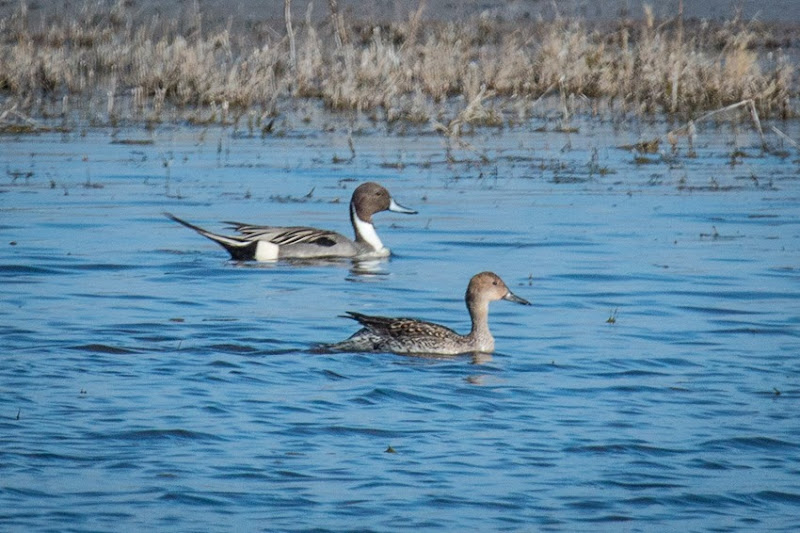
The male Buffleheads were an early species to easily identify with their unique white-notched heads. The ladies were fairly unique too with their white cheek stripes.
There were 2 species I was constantly getting confused—the Redheads and the Canvasbacks. Both males have red heads and mostly white bodies, but the difference is the bill color and head shape. The Redhead has a light blue bill with black tip, and has a more rounded head.
The Canvasback has a more triangular head and a black bill:
The ladies are another way to tell these two breeds apart. From this shot, I can’t see the male’s bill, but I know it’s a Canvasback because the females have pale bodies, whereas the Redhead ladies are all brown.
Besides the Coot, perhaps the most abundant waterfowl at Bosque in March is the Northern Shoveler. The males are unmistakable with their green heads, multi-colored bodies, and flat, wide, black bills.
The other green-headed male duck is a very familiar one to most parts of the U.S., the Mallard:
Of all the waterfowl species, though, I think I enjoyed the smaller Teals the best. Just spectacularly marked birds!
Cathy said that hunters often call Green-winged Teals “butter butts” due to their light yellow rear ends that bob in the water when they are feeding. The green on the male’s head is only visible if the sun hits it just the right way—otherwise, his head looks all cinnamon (rufous-colored).
There’s no mistaking the male Cinnamon Teal. He’s “all cinnamon!”
Finally, there’s the beautifully-marked Blue-winged Teal. The male has a blue/gray head with a vertical white stripe around its face, and both male and female have richly-marked bodies.
The females look almost identical to female Cinnamon Teals, so the only good way to tell them apart is to see what males they’re swimming next to!
The tiniest waterfowl at the Refuge in March is the cute little Pied-billed Grebe with its black and white bill. They’re only about half the size of the other species!
Speaking of other species, Bosque certainly had them too in March. The very first non-bird species I saw was a Collared Peccary, a.k.a. Javelina. Just don’t call them wild pigs, because they’re not!
Another morning, I spotted one of our herds of mule deer. There are also herds of elk, pronghorn, and even oryx on the Refuge, but I only ever saw mule deer (who were much more tolerant of human visitors).
Raptors (Hawks, Eagles, etc) are in abundance in Winter. By March, though, the Bald Eagles have already flown north to leave the Hawks and Harriers in charge at the Refuge.
I was never able to get a good shot of the most-common Red-tailed Hawk, but did happen to get some of a female Northern Harrier, which is about the same size with a wingspan of nearly 4 feet! The Harrier is distinguished by the white band around the base of its tail and its “owl-like” face.
I also enjoyed spotting this Harlan’s Hawk one day perched way up in a tree looking for its next meal--
March is certainly a month of transition at Bosque. While the winter-resident flocks of Sandhill Cranes had left the Refuge by mid-February, there were the occasional (and unmistakable) loud honks of flocks flying in for the night at sunset.
These were cranes who had spent the winter further south in parts of southern Arizona and Sonora, Mexico and were simply pulling in to get a good night’s rest and some free breakfast before continuing their flight north. Like any good “Motel 6” of the Refuge System, we “left a light on” for them!
We even had a brief visit by a flock of Ross’ Geese (the smaller cousin to the Snow Goose). They appreciated the free Bosque breakfast buffet as well, before heading out to continue their journey north.
Every morning’s sunrise view of the refuge from my RV window would make me wonder the same question-- who will arrive next?
Stayed tuned, and I’ll tell you about our April residents!


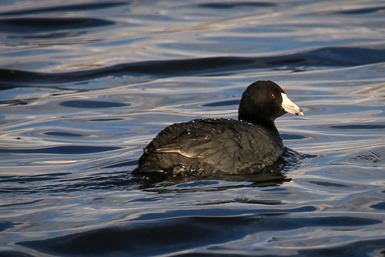


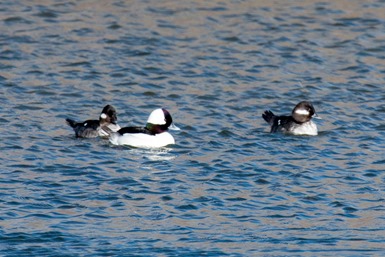


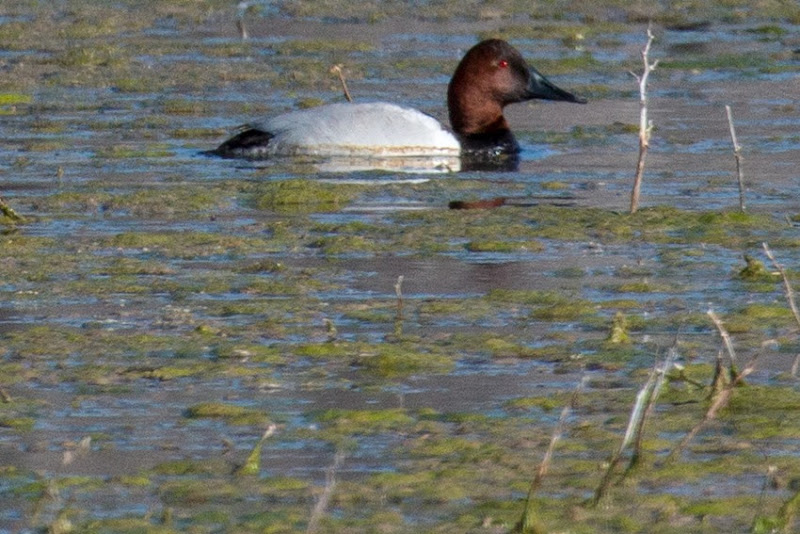
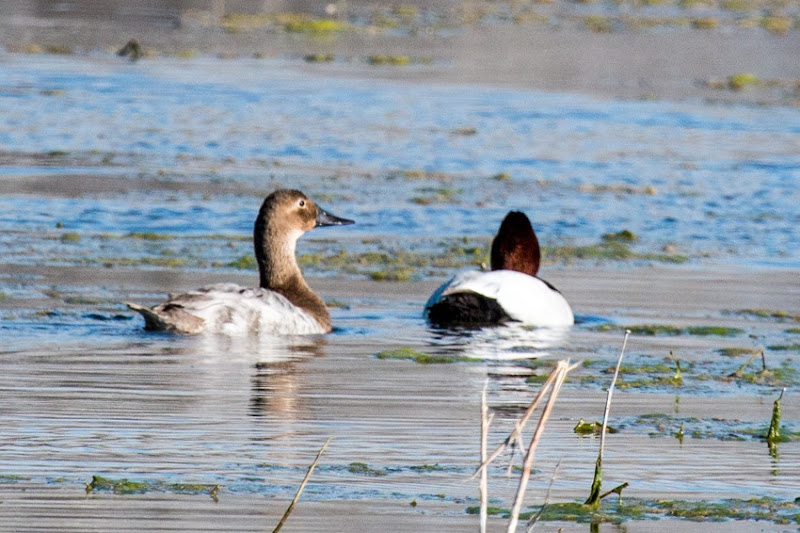
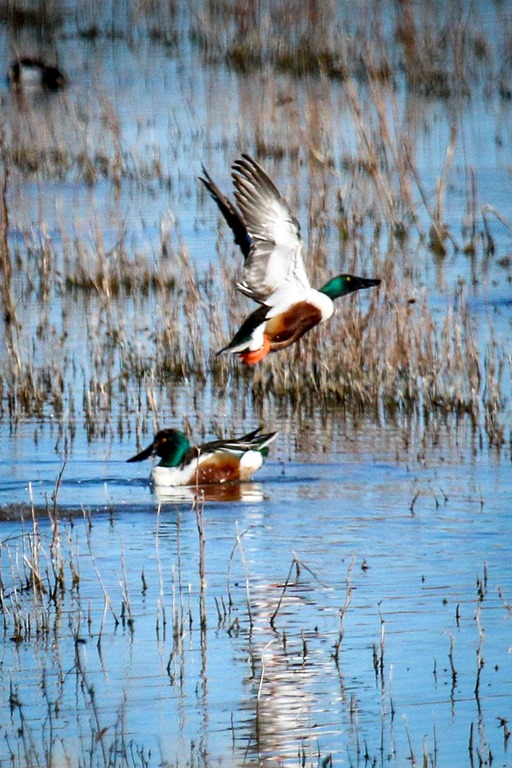
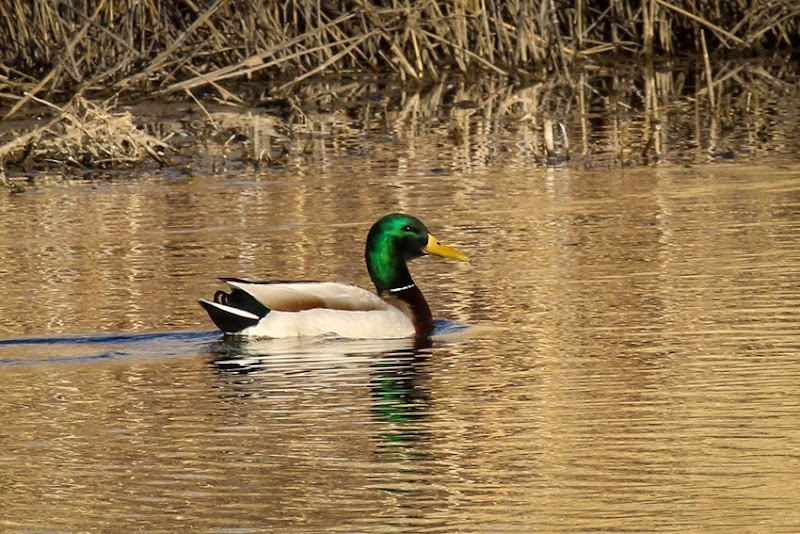
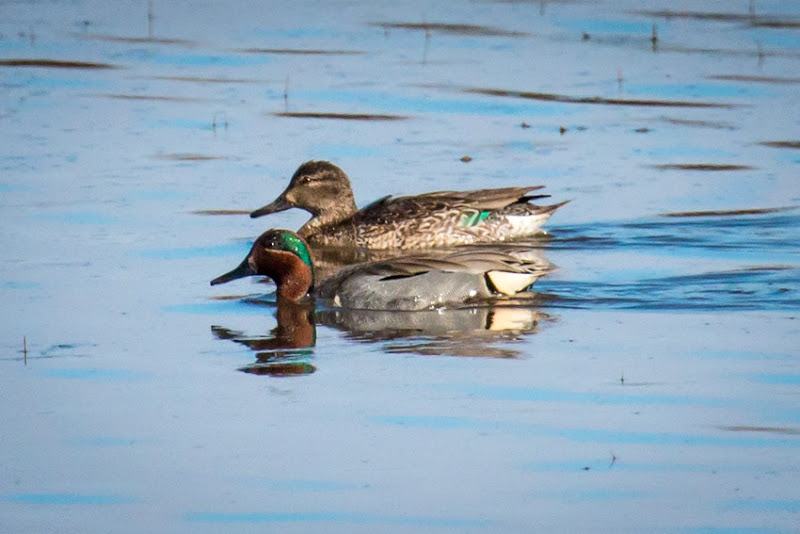

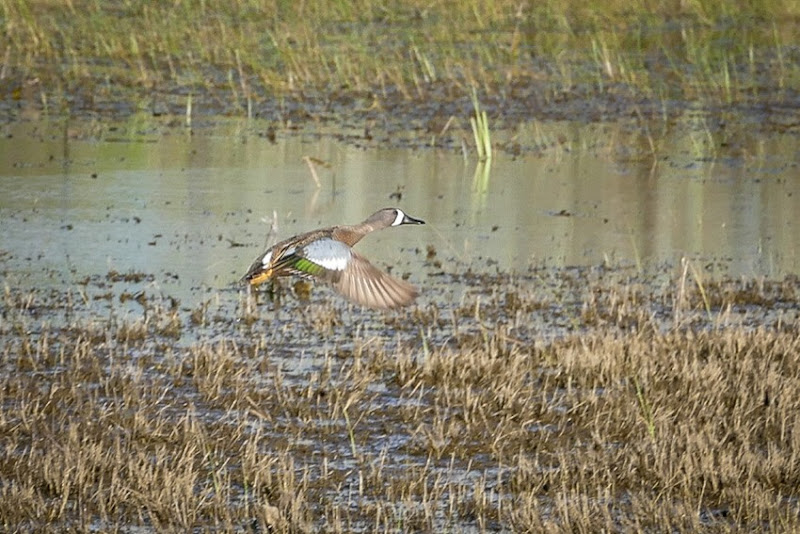




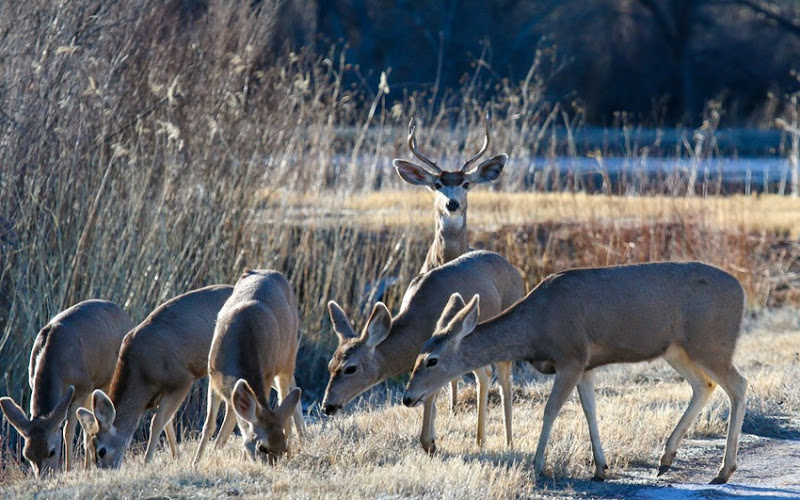
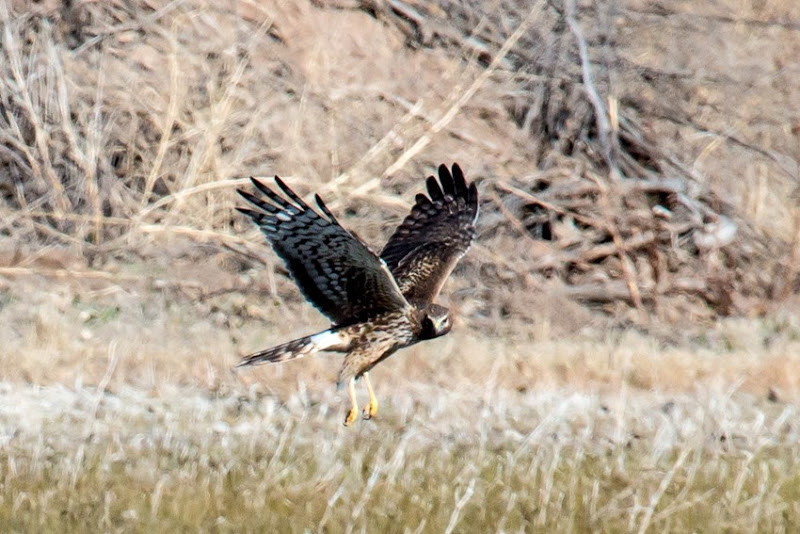
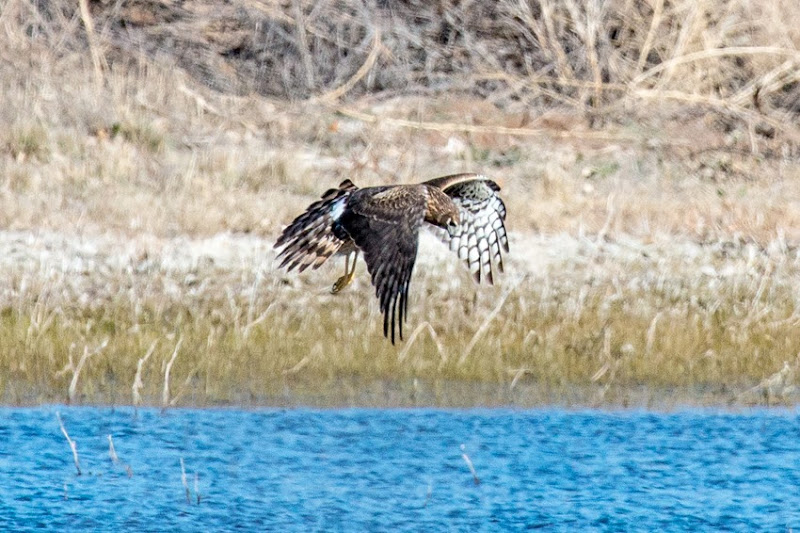
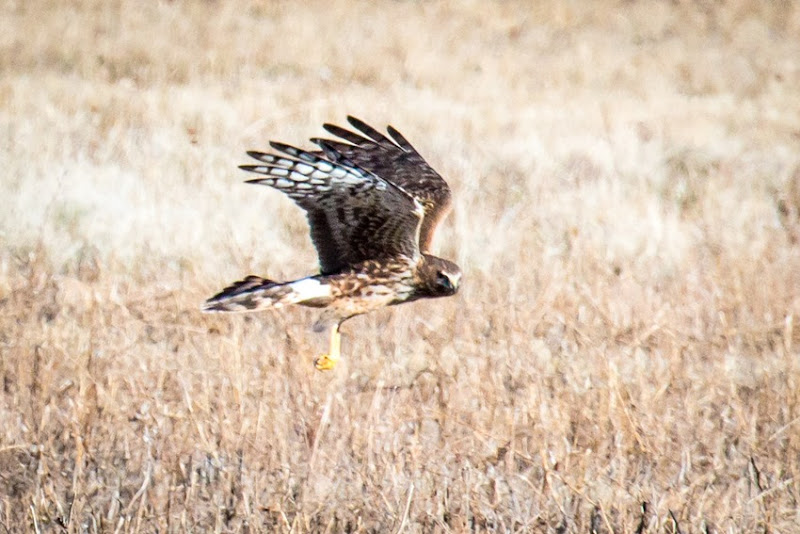
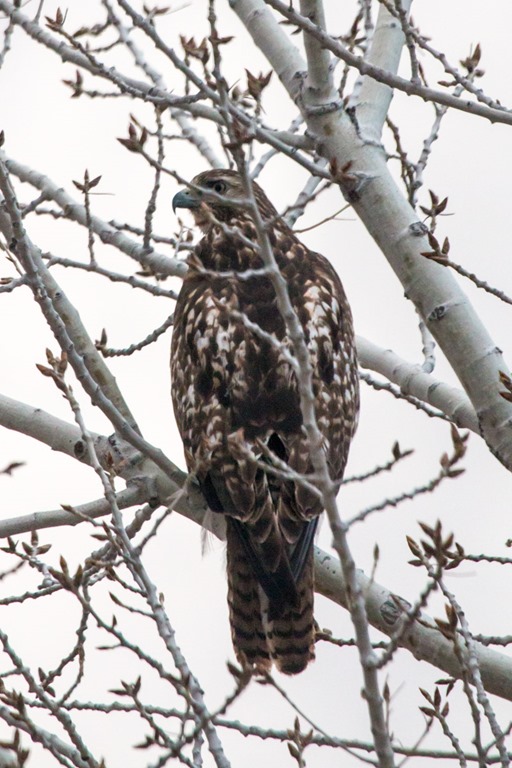
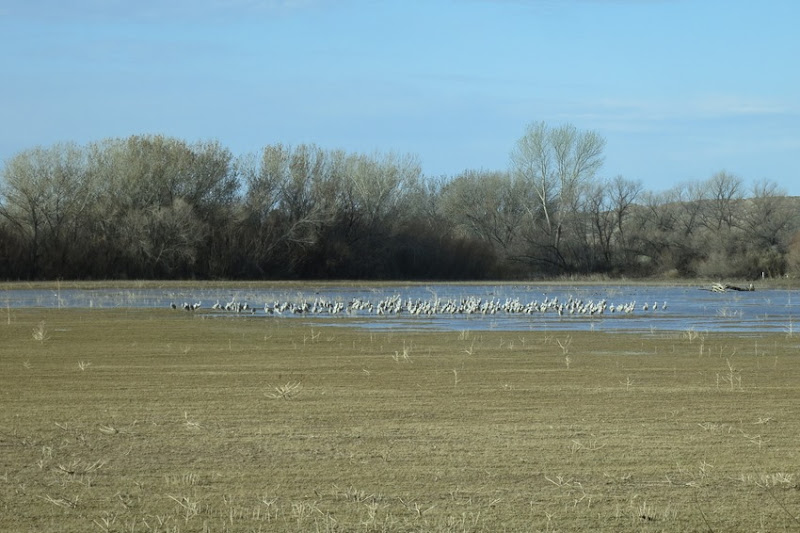
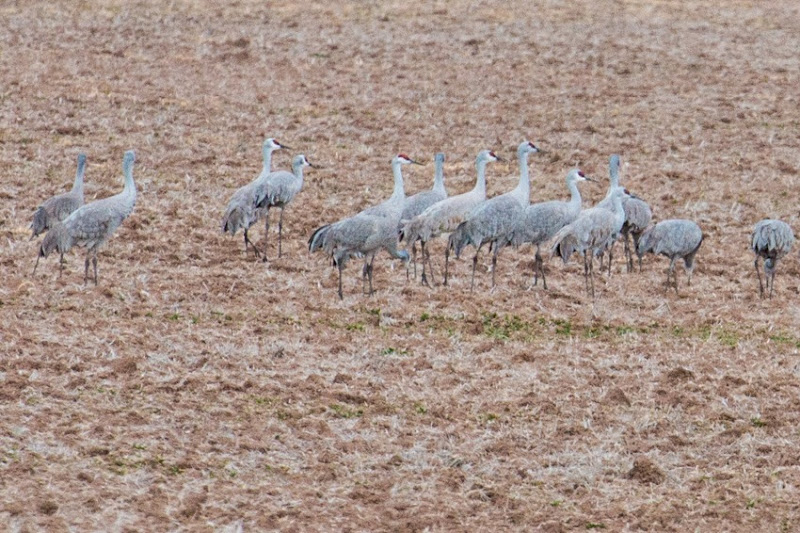


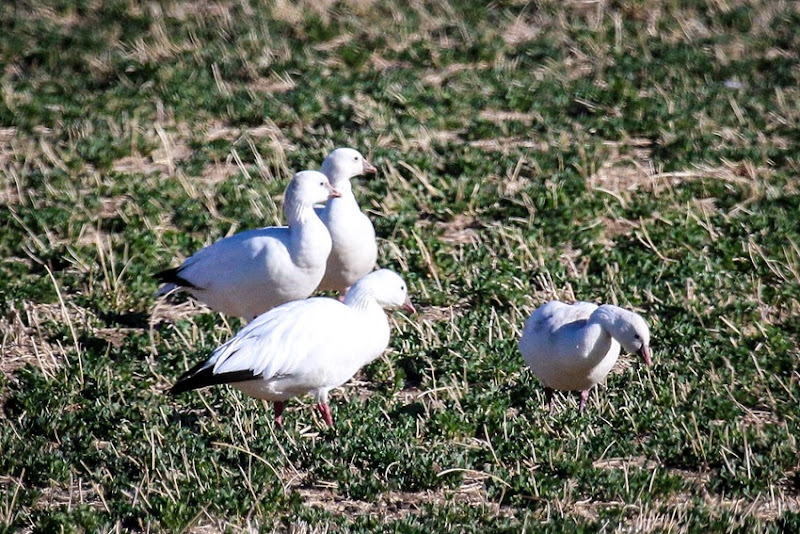
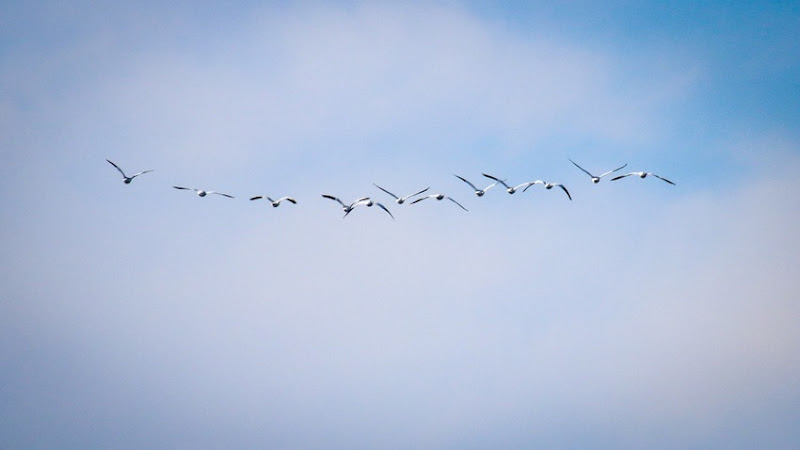
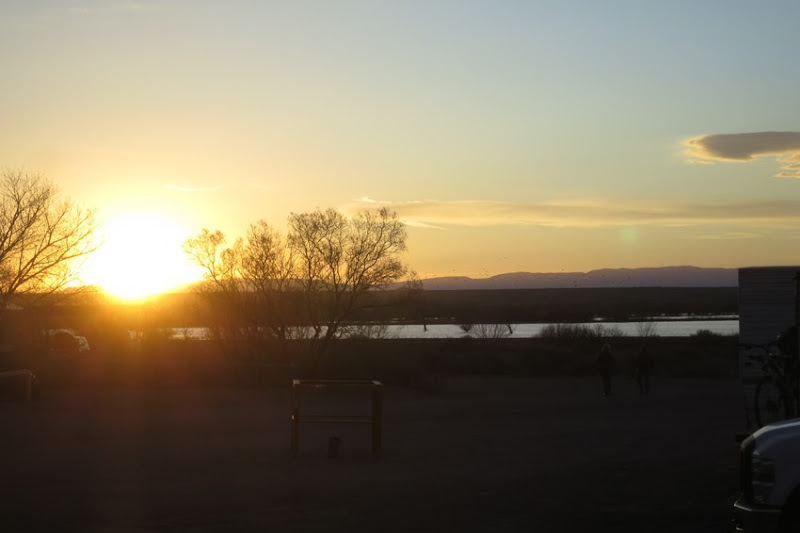
Ive had this refuge on my must visit list for a few years now...this post makes me wanna go NOW!
ReplyDeleteNice pictures, Lynne. I never think of or associate New Mexico and waterfowl together. Looks like a nice place to visit. Thanks for sharing.
ReplyDeleteLove those canvasbacks, Lynne! Very nice!
ReplyDeleteJim
Gorgeous! Just gorgeous.
ReplyDeleteLovely. Who knew that all of this was in New Mexico? Thanks for the tour.
ReplyDelete